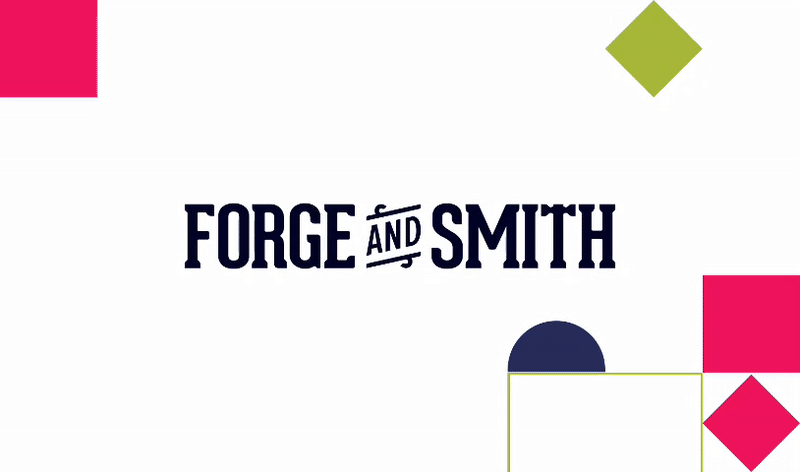Before their team of engineers, strategists, and creatives developed Refoundry, Forge and Smith was like any other web agency experiencing the pains web agencies know too well:
- Clients expecting significantly more control over their new sites
- Developers backlogged on builds due to a high volume of change requests and repetitive tasks
- Clients demanding a much shorter time to launch without compromising quality
- Delayed launches due to too many QA tasks waiting for a developer
- No time to push the agency’s capabilities through professional development and innovation
WordPress loyalty versus platform frustration.
Forge and Smith has been a WordPress agency since its inception in 2011. The company has built a strong reputation that yields a lot of referral business, particularly in the tourism, research, education, and non-profit spaces.
From both a financial and a strategic standpoint, it was no longer possible for the Forge team to continue working exactly the way they had been. That much was clear. Client satisfaction means relationships, relationships mean referrals, and more clients means more paychecks.
But being a small business, there wasn’t exactly a big bag of extra cash available to hire more developers, to speed up the builds and launches. And there was no solution in sight for the issues of rising client frustration with WordPress’s rigidity, and its slower page speeds due to bloated theme code.
Forge and Smith founder Shawn Johnston wasn’t going to switch his business to another platform just for the sake of giving clients a visual editor. He strongly believes that WordPress is still the best platform for building scalable, SEO-friendly, accessible websites.
“We needed a solution that could deliver the high-performance quality of custom, but be usable by everyone on the agency team – and by clients.
“They don’t want a site that they have to keep paying us or some other developer to edit for them. And it makes sense. The lack of flexibility probably feels like we’re tricking them into being dependent on us, for our own financial gain. When really it’s just how custom WordPress has always been.”
Significant time-savings on website builds.
Johnston didn’t see a viable solution on the market, so he took matters into his own hands (and the hands of three experienced engineers) and created Refoundry to address all of these specific pain points. But we’re not here to talk about Refoundry’s origin story – this is Forge and Smith’s success story.
In late 2022, the Forge and Smith team built the first client site on Refoundry, and experienced a total transformation with positive impact on multiple teams.
Previously, each new build was approached the same way most agencies do it. The site would start with Forge and Smith’s custom WordPress theme code, then pages and post types were added. Then a developer would custom-code every section of each page. For each section, they had to set up a custom field, custom type, create a layout, style it with CSS, and further code it with HTML and PHP to be called to the frontend.
Lather, rinse, repeat. And that “repeat” part is one of the biggest time-sucks that all agencies face.
“Refoundry speeds up and systemizes 80-90% of the predictable, repeatable parts of all web projects. But everything still works the way WordPress itself does, developers can add or extend anything you want, the same way you do now.”
Now, one of Forge and Smith’s developers can quickly and easily assemble a website from Refoundry blocks and settings to match designs. Only about 10-20% of the site remains to be custom-coded. This significantly reduces the amount of time it takes to build a custom site, and the same is true for sites of any size.
“We have used Refoundry to build three-page sites and a site with almost 50 thousand posts. The time savings is always 80 to 90 percent,” said Johnston.
Transforming agency processes.
It wasn’t just Forge and Smith’s development team that benefitted from adopting Refoundry.
“A lot of times a client’s feedback during QA would require developers, even for small things like changing content that was anywhere outside the editor. We’d have these backlogs of tickets for small changes to styling on a heading or spacing around an image. And these tickets have to wait to get assigned to a developer, and you’re rotating developers through QA days where they aren’t building sites.
“One of the biggest impacts of Refoundry is that now it’s a lot faster for anyone on the team to adjust things as they populate content or do a design review, without needing a developer. And client feedback that comes in is so much faster to address, so that launch date isn’t getting pushed.
“We have content strategists and project managers able to make changes for clients. Which is great because those team members know the client and their content really well, and understand the overall goal behind the request.”
The same is true of the SEO team. A strategist can easily edit content in Refoundry to perform on-page SEO tasks, and use all of the usual SEO and analytics plugins.
Faster builds, faster launches, everyone wins.
Forge and Smith’s team has now launched over 100 websites on Refoundry, including these ones featured in their case studies. They report the following awesome wins:
- Increased client happiness and repeat business
- 70% faster build times
- Almost no bug fixes/shorter QA
- +25% websites launched, two years in a row
- Improved cross-team collaboration
- +20% profit margin
Refoundry has also enabled Forge and Smith to invest all that time saved back into the company.
Developers have more time to push their skills and work on new customizations. Design reviews are significantly shorter due to almost no bugs, freeing up designers to spend more time focused on UX and UI design work. And the shorter build stage meant the agency could extend the content gathering and population stage without pushing out launch dates, and add more content support services.
But most importantly, clients are way more satisfied with the flexibility they get from their new sites. This has already led to an increase in referrals, and even repeat business from clients who represent multiple organizations within a network.




